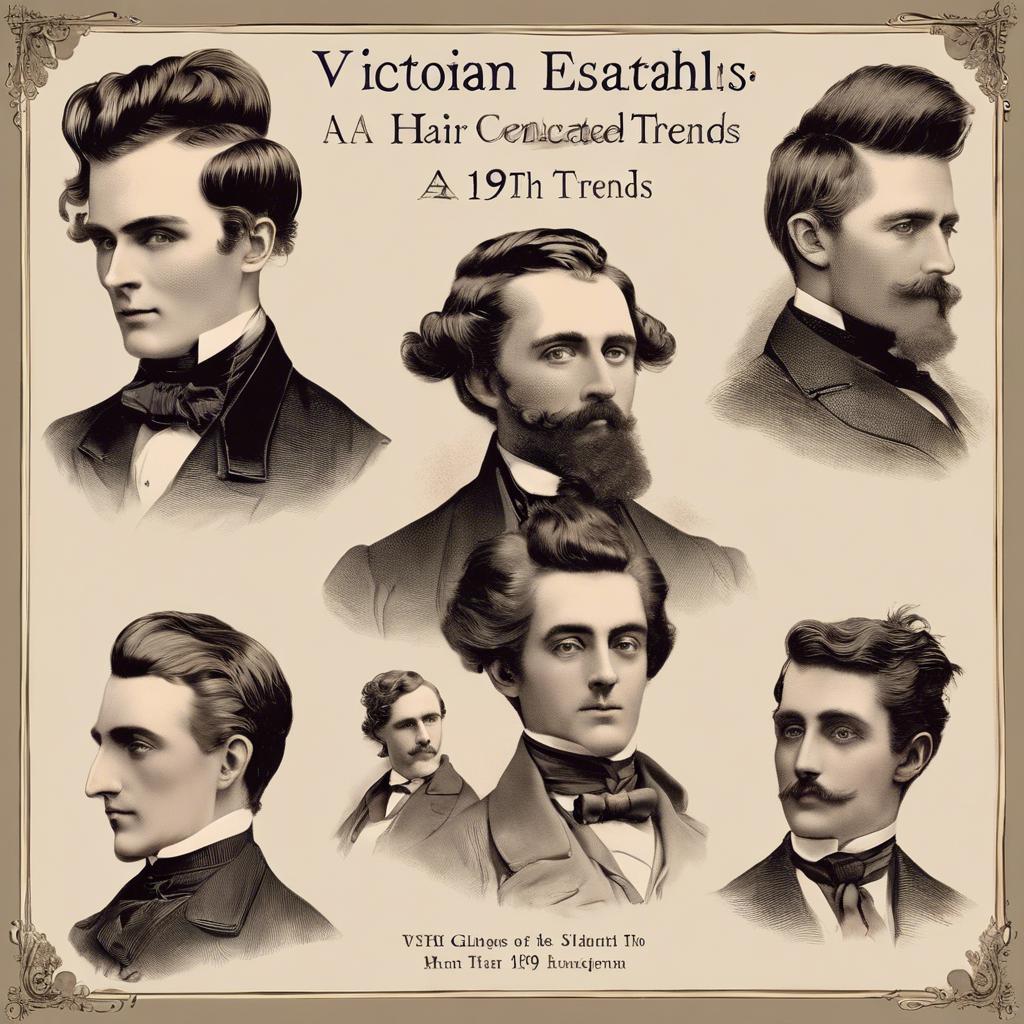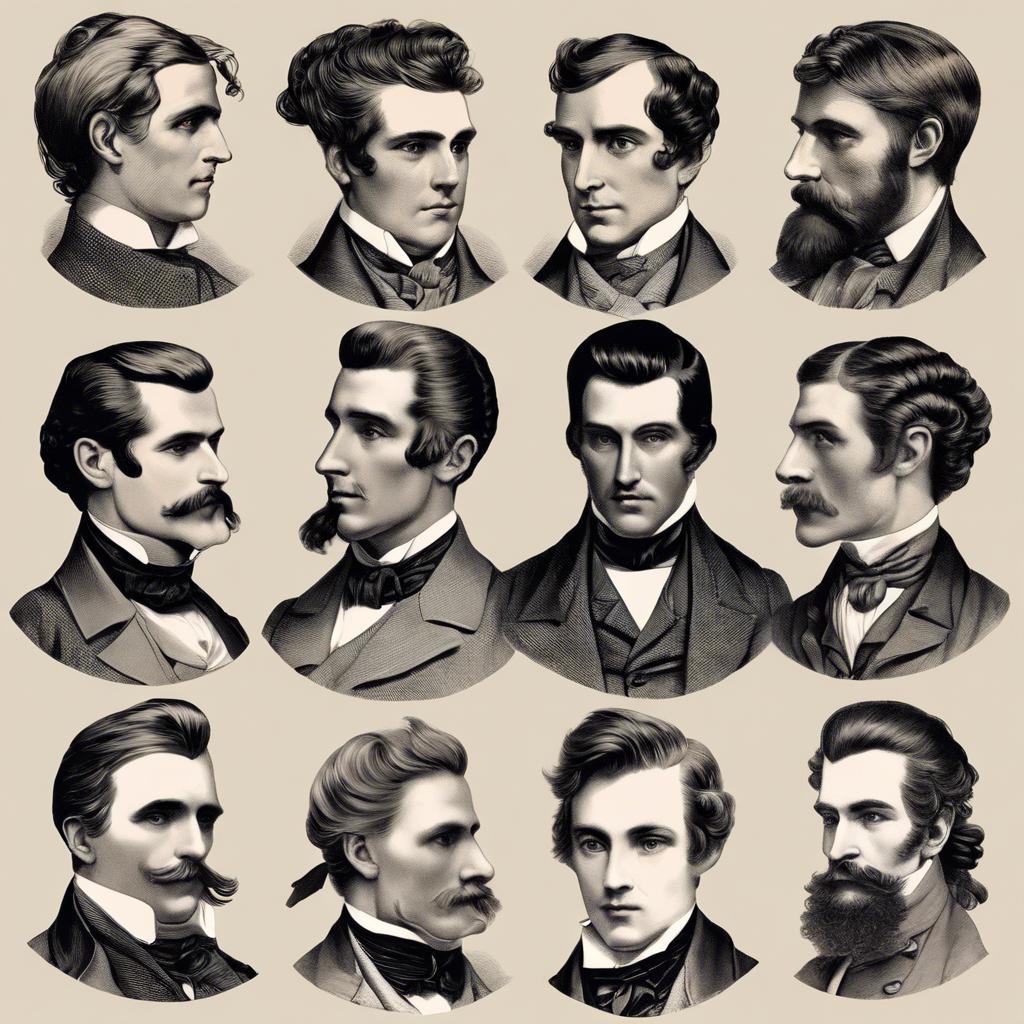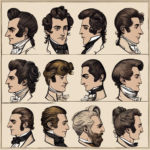The 19th century was a period marked by significant changes in society, politics, and culture. One aspect of this transformative era that often goes overlooked is the evolution of men’s hairstyles. From the dapper coiffures of the early 1800s to the more relaxed and natural looks of the late Victorian era, the hairstyles of this period reflected the societal norms and values of the time. In this article, we will explore the various trends and influences that shaped 19th century men’s hairstyles, shedding light on the fascinating history behind these fashion statements.
Step Into the World of Cheryl Bolen
Dive into the enchanting stories of love, intrigue, and elegance set in the Regency Era. Cheryl Bolen's novels offer timeless romance and captivating tales that will leave you wanting more.
Explore Cheryl Bolen's Books Now
Victorian Era Mens Hairstyles: A Glimpse into 19th Century Hair Trends
The Victorian Era was a time of elegance and sophistication, with men’s hairstyles reflecting the societal norms and trends of the time. During the 19th century, men’s hair was typically worn longer than it is today, with an emphasis on grooming and styling. Let’s take a closer look at some of the popular hairstyles that were favored by men during this period:
- Slicked Back Hair: One of the most common hairstyles for men in the 1800s was the slicked-back look. This style involved combing the hair back and applying pomade or other grooming products to create a smooth, sleek appearance.
- Curled Mustaches: Another popular trend among Victorian men was to grow out their mustaches and curl the ends. This iconic look was achieved by carefully twisting the ends of the mustache and styling them with wax.
- Side Part: The side part hairstyle was also a classic choice for men during the Victorian Era. This style involved parting the hair to one side of the head and keeping it neatly groomed and styled.
In addition to these popular styles, some men also opted for more flamboyant looks, such as wearing top hats or adding decorative accessories to their hair. men’s hairstyles in the 1800s were a reflection of the fashion and grooming standards of the time, emphasizing refinement and elegance. Today, these vintage looks continue to inspire modern trends and pay homage to the timeless style of the Victorian Era.
| Hairstyle | Description |
|---|---|
| Slicked Back Hair | Combed back with pomade for a sleek appearance |
| Curled Mustaches | Grown out and styled with wax for a curled look |
| Side Part | Hair parted to one side for a classic and groomed look |
Popular Haircuts for Men in the 1800s: From Side Parts to Pompadours
In the 1800s, men’s hairstyles saw a variety of trends that reflected the fashion of the time. From classic side parts to bold pompadours, gentlemen experimented with different looks to stand out in society. Let’s take a look at some of the most popular haircuts for men during this elegant era.
One iconic hairstyle from the 1800s was the sleek side part. This style featured neatly combed hair with a defined part on one side of the head. It was a sophisticated and refined look that was favored by gentlemen who wanted to exude a sense of class and elegance. The side part was often paired with a clean shave or a well-groomed beard for a polished appearance.
Another fashionable haircut for men in the 1800s was the pompadour. This bold style involved creating a voluminous mound of hair on top of the head, which was often styled with pomade for added height and shine. The pompadour was a statement look that symbolized confidence and style, making it a popular choice among dapper gentlemen of the era.
Maintaining Authenticity: How to Achieve an 1800s Inspired Hairstyle Today
To achieve an authentic 1800s inspired hairstyle today, it is important to understand the popular trends of that era. Men in the 1800s often wore their hair longer on the top and sides, with a clean-shaven face or a well-groomed beard. To replicate this look, consider the following tips:
- Grow out your hair: Allow your hair to grow longer on the top and sides, as this was a common style for men in the 1800s.
- Use pomade or hair oil: To achieve a slicked-back look, use pomade or hair oil to style your hair and keep it in place.
- Consider a side part: Many men in the 1800s wore their hair with a side part, which can add an extra touch of authenticity to your hairstyle.
In addition to styling your hair, you may also want to consider incorporating accessories such as top hats or bow ties to complete your 1800s inspired look. By paying attention to the details and staying true to the historical trends of the era, you can achieve an authentic 1800s hairstyle that is sure to turn heads.
Mastering the Art of Vintage Grooming: Tips and Tricks for Mens Hairstyles of the 19th Century
Throughout the 19th century, men’s hairstyles evolved into sophisticated and intricate works of art. From the dapper side part to the elegant pompadour, mastering these vintage grooming techniques can add a touch of old-world charm to your look.
For a classic 1800s gentleman’s hairstyle, start by growing out your hair to a medium length. The key is to keep your locks well-groomed and neatly styled. Consider using hair pomade or wax to achieve the sleek and polished finish that was popular during this time period.
Experiment with different styles such as the slicked-back look or the timeless 19th-century top hat hairstyle. Don’t be afraid to accessorize with a dapper bowler hat or a stylish cravat to complete your vintage ensemble. Remember, confidence is key when rocking these iconic men’s hairstyles from the 1800s.
Insights and Conclusions
the hairstyles of 1800s men were a reflection of the changing societal norms and trends of the time. From the elaborately styled wigs of the early century to the more natural and unkempt looks of the late Victorian era, men’s hairstyles evolved alongside the shifting cultural landscape. These hairstyles not only served as a form of self-expression but also as a means of adhering to the expectations of the society they lived in. As we look back on the hairstyles of the 1800s, we can gain a deeper understanding of the history and customs of the era.


